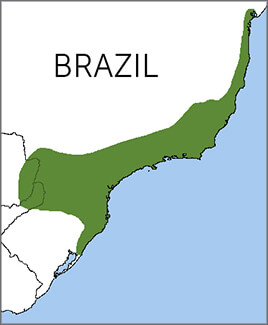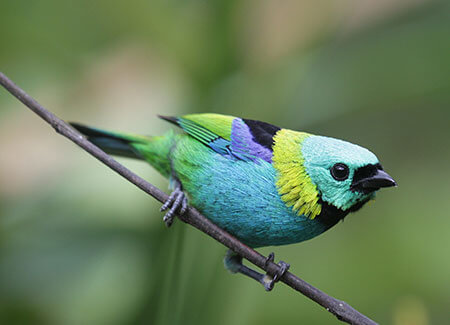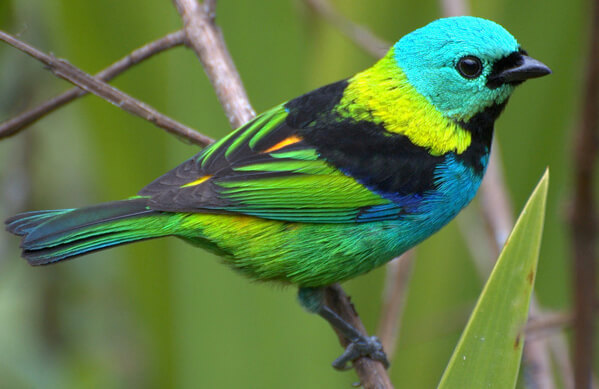 Like most tanagers, including the Gilt-edged Tanager, our Bird of the Week is an animated work of art. Featuring swaths of turquoise, yellow-orange, lime green, violet, and black, the male Green-headed Tanager brightens forests as well as orchards and parks.
Like most tanagers, including the Gilt-edged Tanager, our Bird of the Week is an animated work of art. Featuring swaths of turquoise, yellow-orange, lime green, violet, and black, the male Green-headed Tanager brightens forests as well as orchards and parks.
While some tanagers are skilled vocalists, the Green-headed Tanager simply chirps (as the above recording of birds on a bird feeder in Brazil suggests).
Atlantic Forest Survivor
Although this tanager is widely distributed within its Atlantic Forest range, this habitat is threatened by deforestation, and only about eight percent of the original habitat remains. Green-headed Tanagers share the Atlantic Forest with the critically endangered Stresemann's Bristlefront, threatened Banded Cotinga, and more common Brazilian Tanager.
Sign up for ABC's eNews to learn how you can help protect birds

Green-headed Tanager. Photo by Fabrice Schmitt
Green-headed Tanagers forage through the canopy in small flocks, either on their own or in association with a larger mixed-species flock. Their diet is a mixture of fruits and insects, taken as the bird actively moves through the upper canopy.
Like others in its genus, a breeding pair is assisted by “helpers,” probably young from previous broods. Females resemble males but are duller-colored.
Conserving Habitat in Southeast Brazil
ABC and our partner REGUA are working to preserve Atlantic Forest habitat at the Guapi Assu Reserve in southeast Brazil, where visitors can see the Green-headed Tanager and many other species found nowhere else.
In winter, the Blackpoll Warbler, a long-distance migrant that breeds as far north as the boreal forest of Canada, can be found in the reserve as well.
Donate to support ABC's conservation mission!



















































